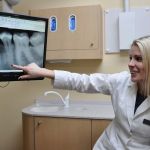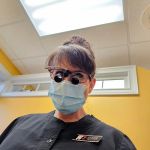What Are the Symptoms of Gum Recession: Understanding the Warning Signs of Gum Disease
- 1. What Is Gum Recession and Why Is It Important?
- 2. Early Symptoms of Gum Recession
- 3. Advanced Symptoms and Risks of Gum Recession
- 4. How to Prevent Gum Recession
- 5. Treatment Options for Gum Recession
1. What Is Gum Recession and Why Is It Important?
Gum recession occurs when the gum tissue surrounding the teeth wears away, exposing more of the tooth or its root. This common condition is often a sign of underlying gum disease and can lead to severe oral health issues if not addressed in time. Gum recession is concerning not just because of its aesthetic impact, but also because it can increase the risk of tooth decay, sensitivity, and even tooth loss.
Understanding the symptoms of gum recession is critical for early intervention and preventing further damage. By recognizing the warning signs, you can take proactive steps to protect your teeth and gums from more severe issues down the line.
2. Early Symptoms of Gum Recession
Early detection of gum recession is key to preventing its progression. Some of the most common early symptoms include:
- Tooth Sensitivity: If your teeth become more sensitive to hot or cold foods and drinks, this could be a sign that your gums are receding and exposing the tooth roots.
- Visible Gum Line Changes: A noticeable difference in the position of your gums, such as the appearance of longer teeth, is often an early indication of gum recession.
- Bleeding Gums: If your gums bleed when brushing or flossing, it may be a sign of gum irritation caused by gum recession or early-stage gum disease.
Recognizing these early symptoms allows you to seek professional help before the problem worsens, ensuring that any necessary treatments can be administered promptly.
3. Advanced Symptoms and Risks of Gum Recession
If gum recession is left untreated, it can lead to more severe symptoms and risks, including:
- Exposed Tooth Roots: As the gums recede, the tooth roots become exposed, leading to increased sensitivity and a higher risk of decay or infection.
- Deep Pockets Between Teeth: Receding gums can create pockets where bacteria can accumulate, leading to more advanced gum disease like periodontitis.
- Loose Teeth: In severe cases, gum recession can cause the gums to no longer support the teeth properly, leading to tooth mobility and even tooth loss.
These advanced symptoms highlight the importance of addressing gum recession early. If you notice any of these issues, it's essential to consult with a dental professional to explore treatment options.
4. How to Prevent Gum Recession
Preventing gum recession begins with a good oral hygiene routine and healthy lifestyle choices. Here are a few ways you can help prevent this condition:
- Brush Gently: Brushing too hard can damage the gums and cause them to recede. Use a soft-bristled toothbrush and gentle, circular motions to clean your teeth.
- Floss Regularly: Flossing helps remove plaque and food particles from between your teeth, preventing gum disease and recession.
- Avoid Smoking: Smoking is a major risk factor for gum disease and can contribute to gum recession. Quitting smoking can significantly reduce your risk.
- Visit Your Dentist Regularly: Regular dental check-ups can help detect early signs of gum disease and recession, allowing for timely intervention.
By adopting these preventive measures, you can reduce your risk of gum recession and maintain healthy gums throughout your life.
5. Treatment Options for Gum Recession
If you are experiencing symptoms of gum recession, there are several treatment options available, depending on the severity of the condition:
- Scaling and Root Planing: This deep cleaning procedure helps remove plaque and tartar from below the gumline, promoting gum health and reducing the effects of recession.
- Gum Grafting: In cases of severe recession, a gum graft may be recommended to cover exposed tooth roots and restore the gumline.
- Antibiotics: If infection is present, your dentist may prescribe antibiotics to help treat the infection and reduce inflammation in the gums.
It's essential to consult with a dentist or periodontist who can assess the extent of your gum recession and recommend the most appropriate treatment options for your case.
If you're concerned about gum recession or any other dental issue, visit Dentistry Toothtruth for expert advice and high-quality dental care. Their team can help you maintain healthy gums and teeth for a lifetime.







 Barrett Dental Care4.0 (221 review)
Barrett Dental Care4.0 (221 review) Warm Springs Dental4.0 (35 review)
Warm Springs Dental4.0 (35 review) David K Buran, DMD5.0 (107 review)
David K Buran, DMD5.0 (107 review) EON Clinics4.0 (24 review)
EON Clinics4.0 (24 review) A H Dental Center2.0 (3 review)
A H Dental Center2.0 (3 review) Arlington Dental Group and Orthodontics4.0 (210 review)
Arlington Dental Group and Orthodontics4.0 (210 review) The Importance of Oral Health Education During Pregnancy for a Healthy Pregnancy
The Importance of Oral Health Education During Pregnancy for a Healthy Pregnancy Best Tips for Brushing Your Teeth Properly for Healthy Gums: Essential Techniques for Oral Health
Best Tips for Brushing Your Teeth Properly for Healthy Gums: Essential Techniques for Oral Health Why Skipping Dental Checkups Can Lead to Bigger Oral Health Problems
Why Skipping Dental Checkups Can Lead to Bigger Oral Health Problems Advantages of Porcelain Dental Restorations
Advantages of Porcelain Dental Restorations How Can Diabetes Cause Tooth and Gum Problems? Preventing and Managing Oral Health Issues
How Can Diabetes Cause Tooth and Gum Problems? Preventing and Managing Oral Health Issues Healthy Habits for Promoting Good Oral Health and Hygiene: Tips for a Healthy Smile
Healthy Habits for Promoting Good Oral Health and Hygiene: Tips for a Healthy Smile